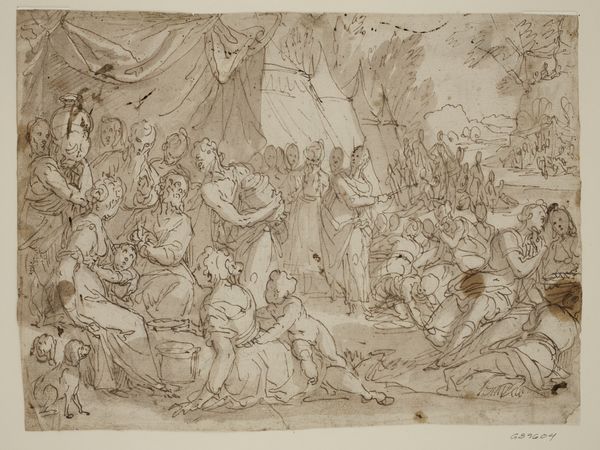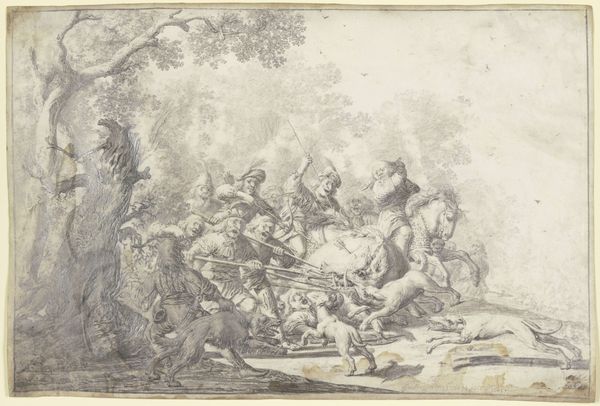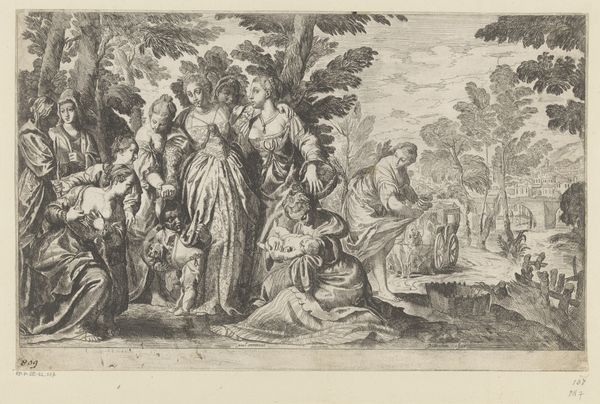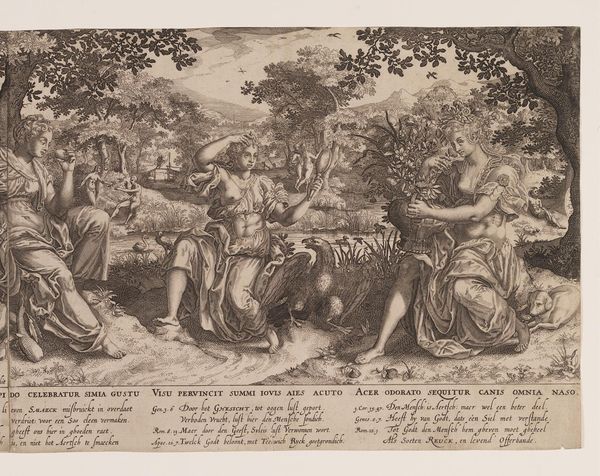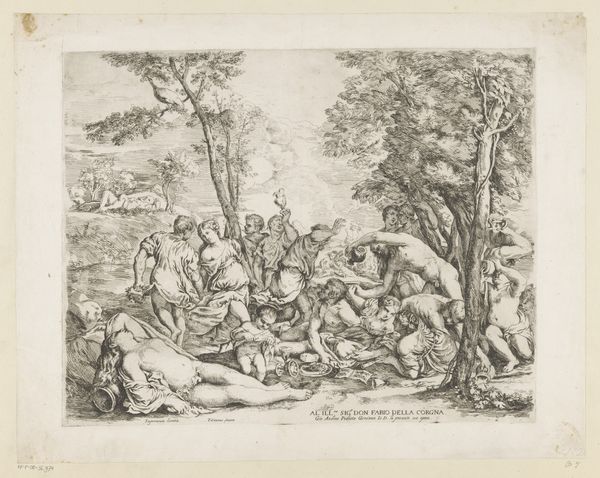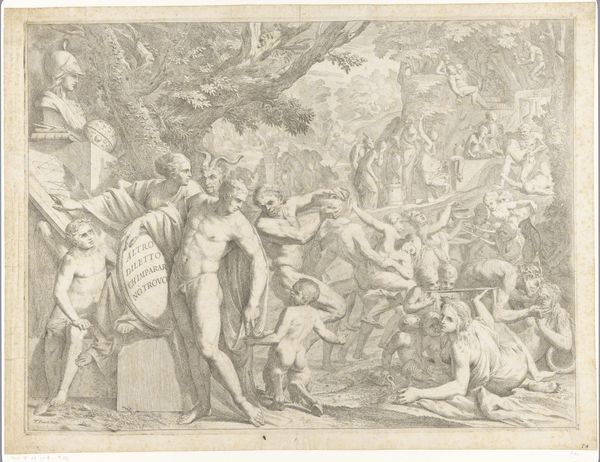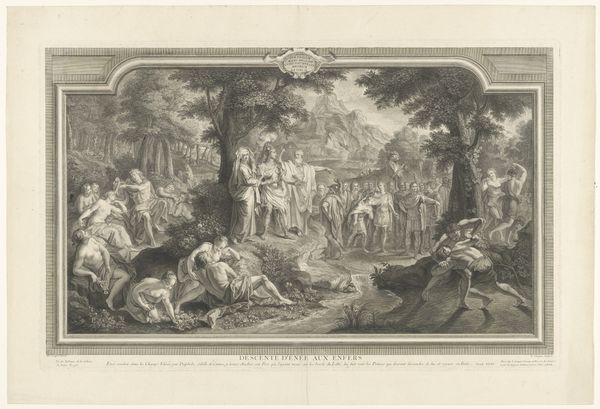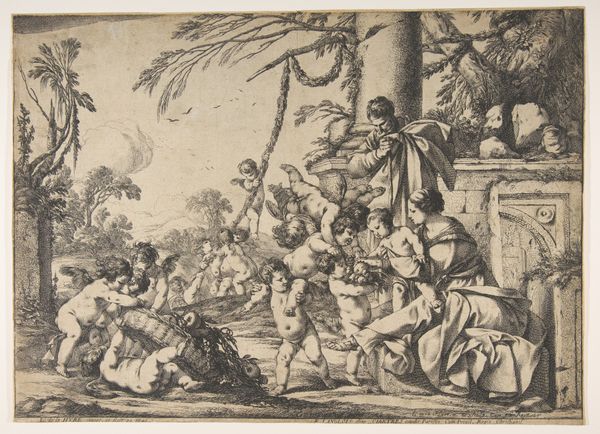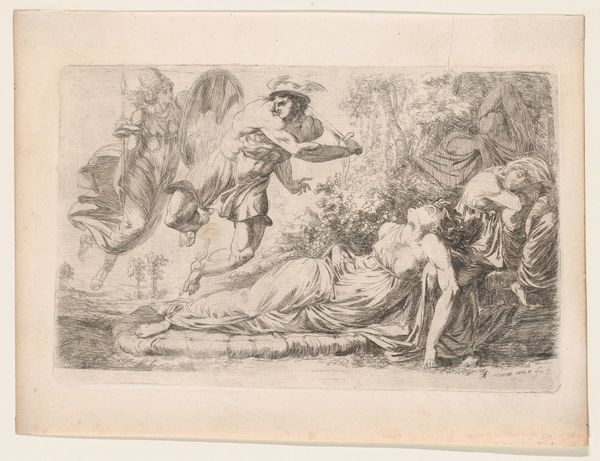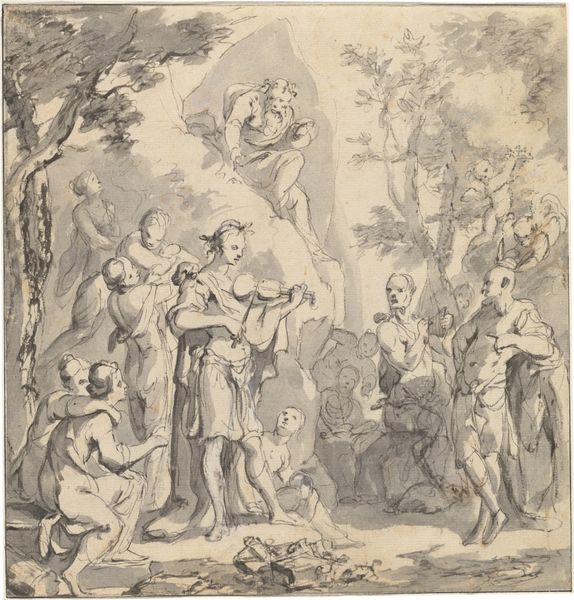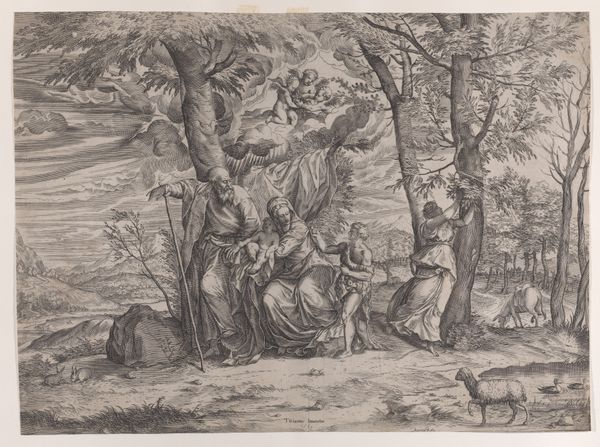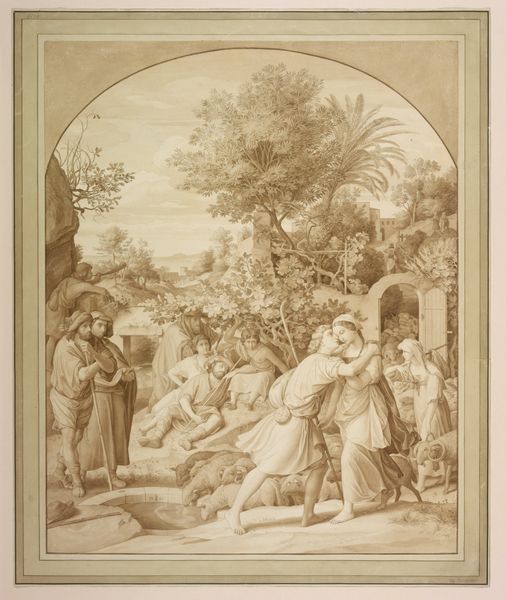
Dimensions: 288 × 387 mm (image); 315 × 410 mm (plate); 340 × 422 mm (sheet)
Copyright: Public Domain
Editor: So, this etching is "Auction of the Cupids" by Johann Heinrich Ramberg, created in 1799. It's got such a fantastical scene. What strikes me is how the figures, both human and cupid, seem caught between seriousness and absurdity. What do you see in this piece? Curator: It's fascinating how Ramberg stages this cupid auction. Think about the late 18th century, a period grappling with Enlightenment ideals while still deeply embedded in social hierarchies. What is Ramberg suggesting by putting love – symbolized by these cupids – up for sale? Is it a critique of arranged marriages, a commentary on the commodification of affection, or both? Editor: That makes a lot of sense. I didn’t initially connect it to social critique. The auction scene seemed almost comical. Are we supposed to view this as purely allegorical, or does the landscape contribute to its meaning? Curator: The landscape, while idyllic, serves as a backdrop to this rather unsettling transaction. Notice how the trees frame the figures, almost like a stage setting. This creates a sense of detachment. The viewer is positioned as an observer of a social spectacle. To me, it evokes the societal pressures shaping individual choices at the time. How do you think its original audience might have perceived this work? Editor: I imagine they might have recognized the commentary on social expectations, maybe even found a bit of satire in it. But seeing it today, I find the commercialization aspect even more relevant given, well, modern dating apps! Curator: Precisely. The artwork's continued relevance lies in its exploration of these dynamics, reminding us that art doesn't exist in a vacuum but interacts with evolving social and cultural landscapes. Editor: I never would have considered it through that socio-political lens. It's a whole new layer to this artwork that I definitely appreciate. Curator: Indeed, seeing art as a product and producer of cultural forces gives a broader understanding of not just art but the societies from which it springs.
Comments
No comments
Be the first to comment and join the conversation on the ultimate creative platform.
